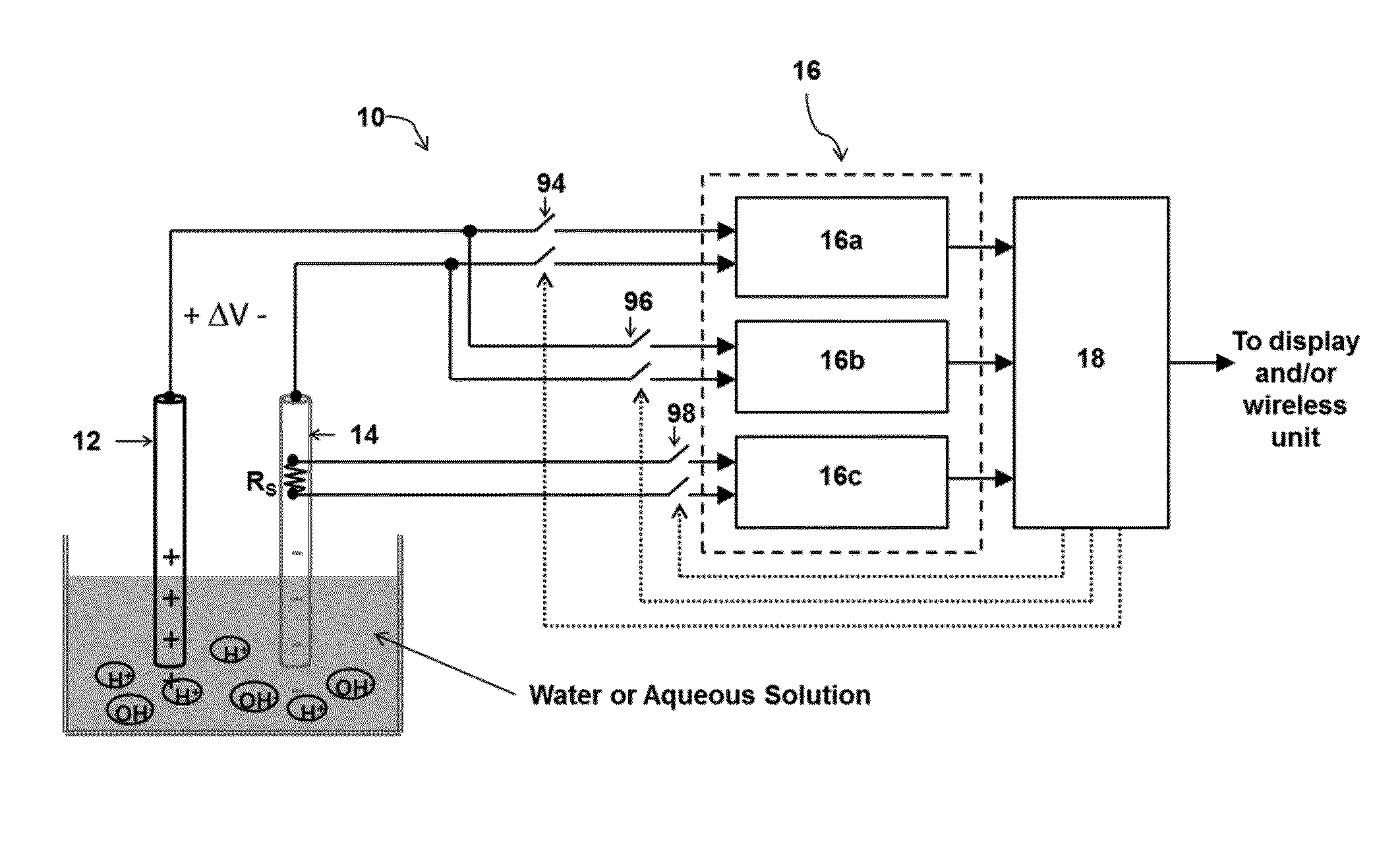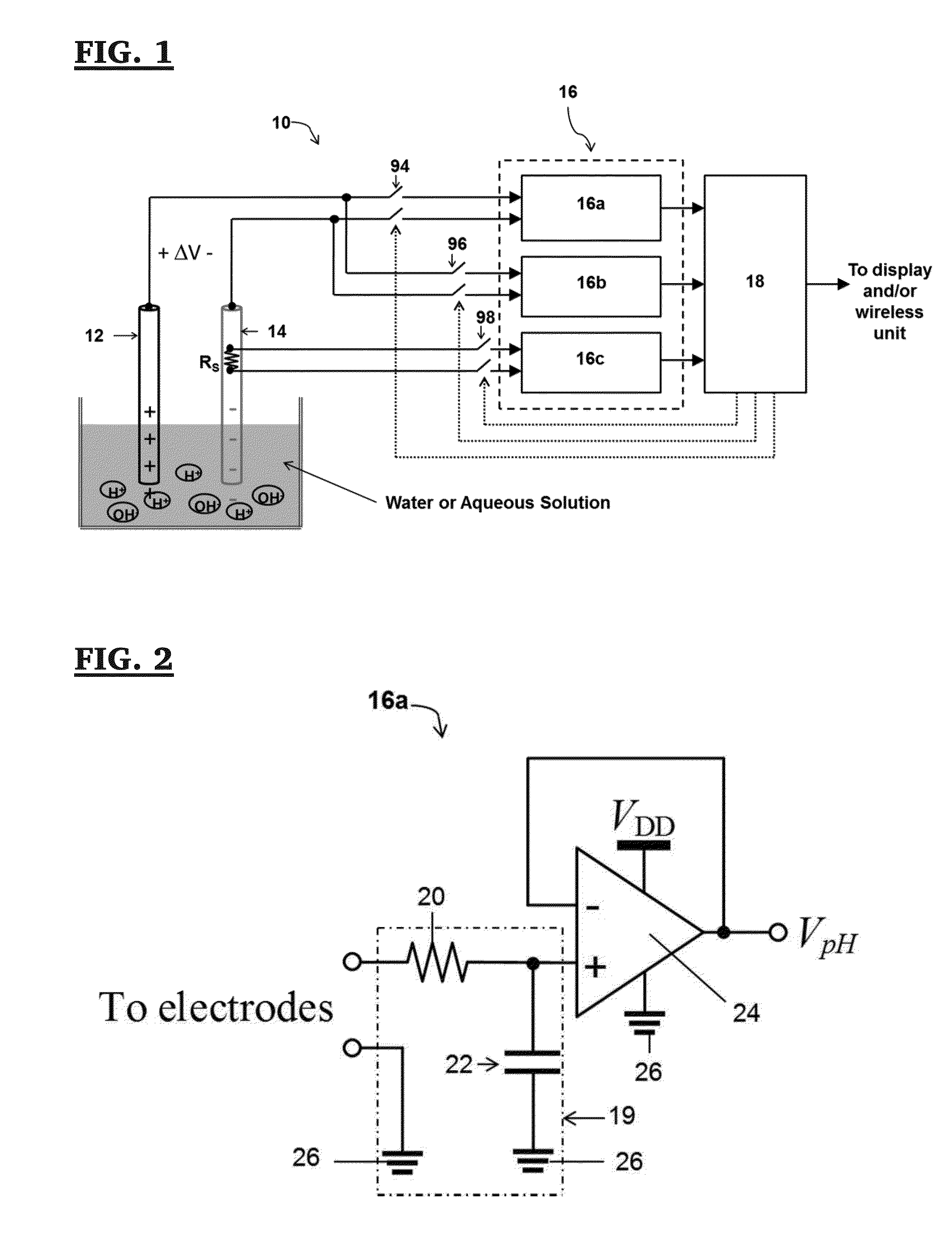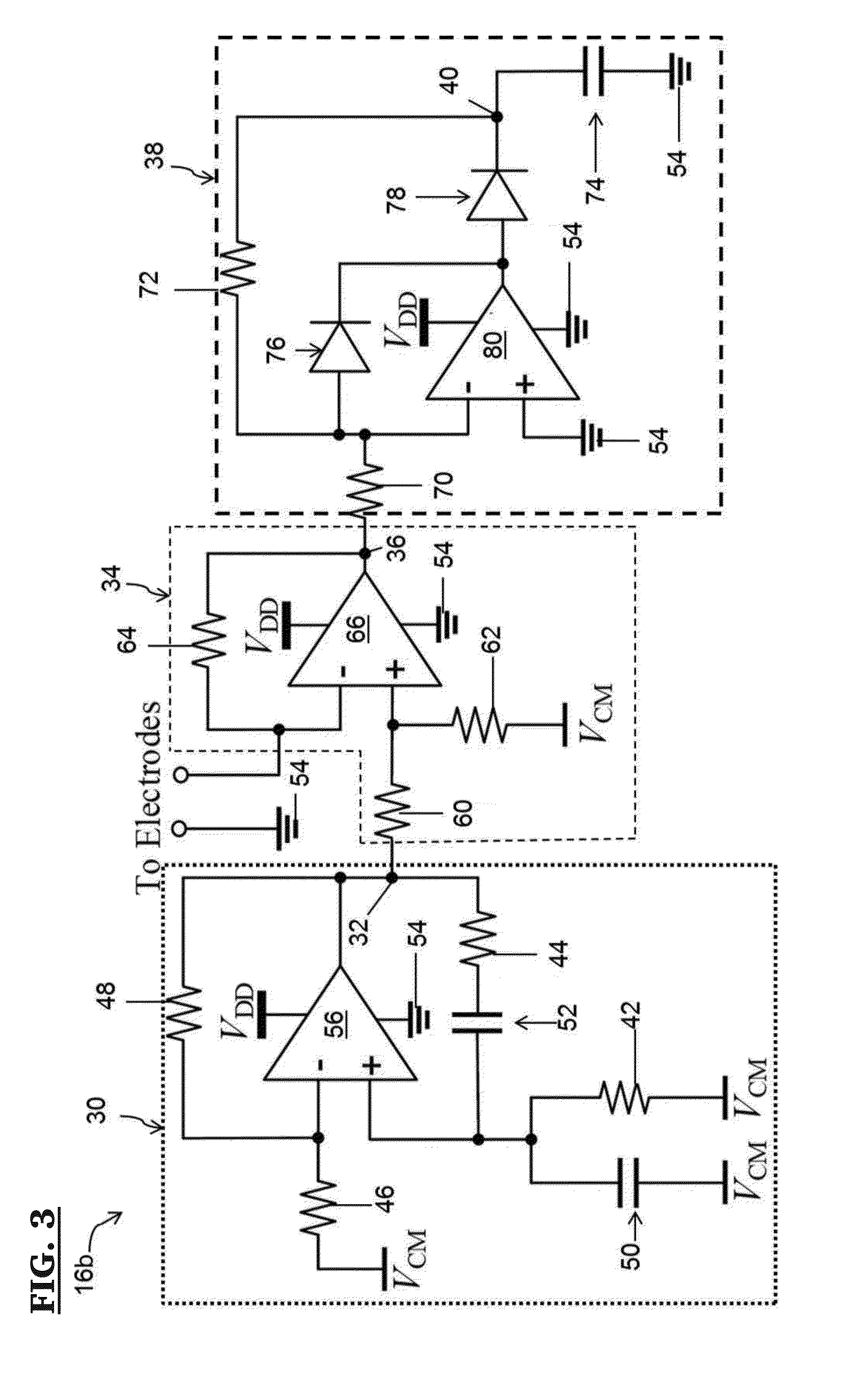Universal water condition monitoring device
- Summary
- Abstract
- Description
- Claims
- Application Information
AI Technical Summary
Benefits of technology
Problems solved by technology
Method used
Image
Examples
example 1
[0064]A prototype of a water condition monitoring device according to one or more embodiments of the present invention was created with a 2 layer printed circuit board (PCB) that included a pH sensor circuit, an EC sensor circuit, a micro controller and the LCD display. A 9V battery was used as the main power source with two additional regulators that generated 3.3V and 5V from the 9V supply to power the sensor circuits, micro controller and LCD. In addition, an RAJ11 interface was implemented to enable on board microcontroller programming. A variable resistor was used for R4 and R5 of the EC circuit (See 38 (R4) and 60 (R5) on FIG. 3) to tune the oscillation frequency and adjust the amplitude of the AC voltage that was applied between the sensor electrodes. This can adjust the dynamic range and resolution of the EC circuit depending on the application conditions.
[0065]In order to measure the pH and EC using the sensor electrodes were placed in 300 ml of distilled water. For EC test...
example 2
[0066]In order to confirm that the output voltage of the proposed EC sensor corresponded to the actual EC value of a water sample, a commercial EC meter was used to map the sensor voltage to the EC value. The EC of the solution was changed from 0.1 siemens to 3.0 siemens, which is the general range for hydroponic applications, and the output voltage of the prototype EC sensor corresponding to the commercial EC meter readings were recorded. A relationship was found between the actual EC value and the proposed sensor output voltage. Based on the relationship between the sensor output voltage and the EC value, a curve fit equation is obtained. That is:
VEC=m*EC+VEC0 (7)
where m is the slope (m=0.3852), VEC0 is the sensor output voltage for EC=0.1 (equal to 1.59V). This VEC is applied to the 10 bit ADC in the microcontroller, which generates digital output corresponding to the input voltage. Since the range of VEC is from 1.59 V to 2.75 V for EC=0.1 to 3.0, assuming a 10-bit ADC (output ...
example 3
[0068]Since the pH is also affected by the nutrient level, to determine the actual pH regardless of nutrient level two different programs were used to determine the pH value depending on the nutrient level (low or high). The nutrient level was determined by the EC, for an EC1.5, high nutrient. In order to determine the output voltage of the proposed sensor corresponding to the actual pH value (first with low nutrient level), a commercial pH meter is used to map the sensor voltage to the actual pH value. The pH of the solution was changed from 5.5 to 8 which is the general range for the hydroponic applications, and the output voltage of the proposed sensor corresponding to the commercial pH meter readings were recorded. A relationship between the actual pH value and the proposed sensor output voltage was found. Based on the relationship between output voltage and pH, a curve fit equation for low nutrient level is obtained. That is:
VpHL=m*pH−VpHL0 (9)
where m is the slope (m=0.115) an...
PUM
 Login to View More
Login to View More Abstract
Description
Claims
Application Information
 Login to View More
Login to View More - R&D
- Intellectual Property
- Life Sciences
- Materials
- Tech Scout
- Unparalleled Data Quality
- Higher Quality Content
- 60% Fewer Hallucinations
Browse by: Latest US Patents, China's latest patents, Technical Efficacy Thesaurus, Application Domain, Technology Topic, Popular Technical Reports.
© 2025 PatSnap. All rights reserved.Legal|Privacy policy|Modern Slavery Act Transparency Statement|Sitemap|About US| Contact US: help@patsnap.com



